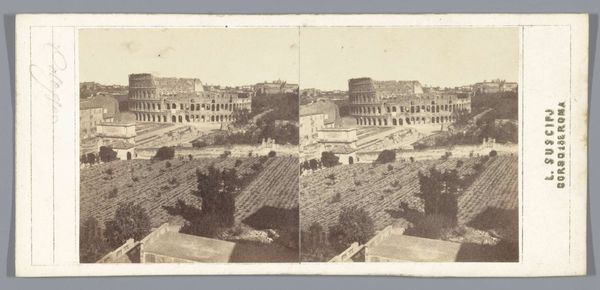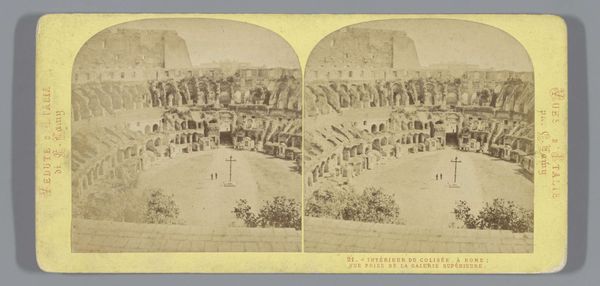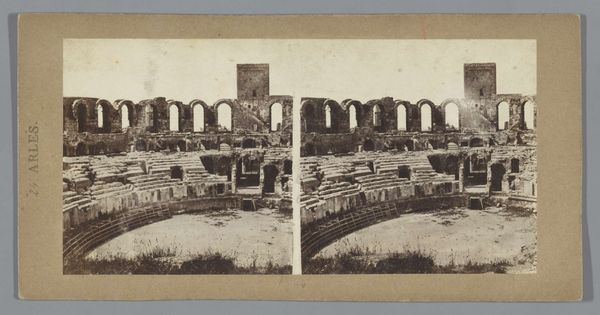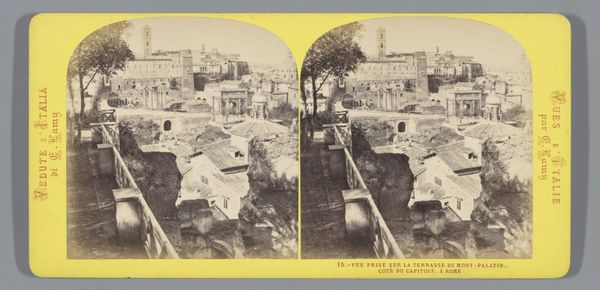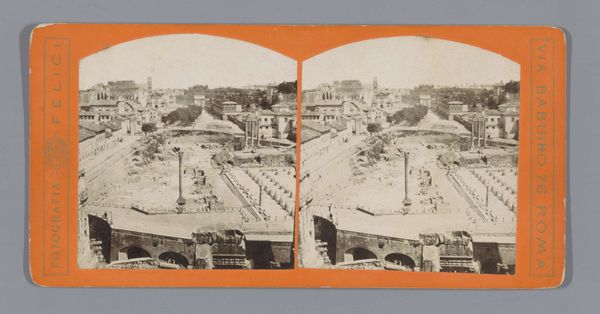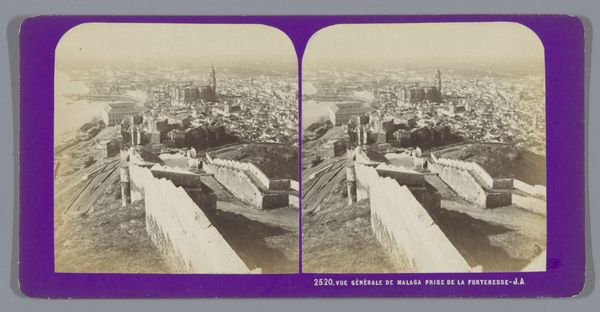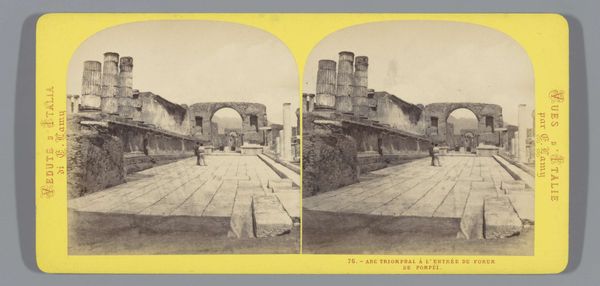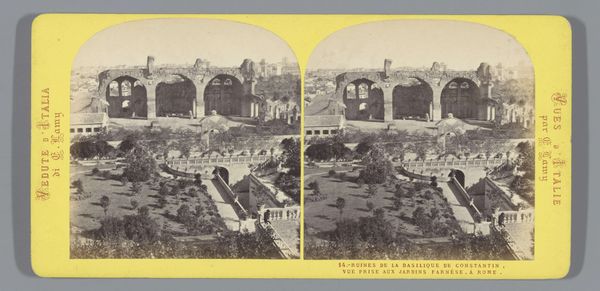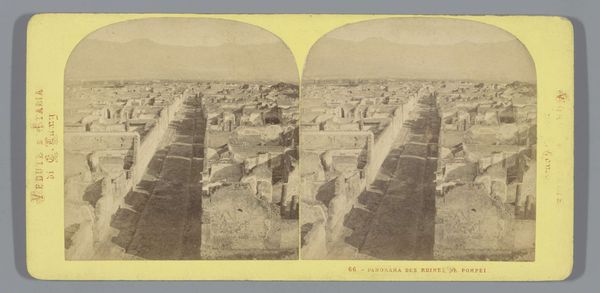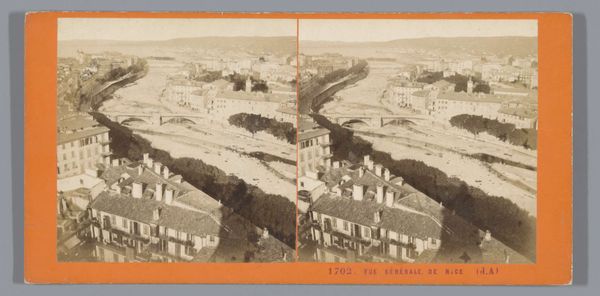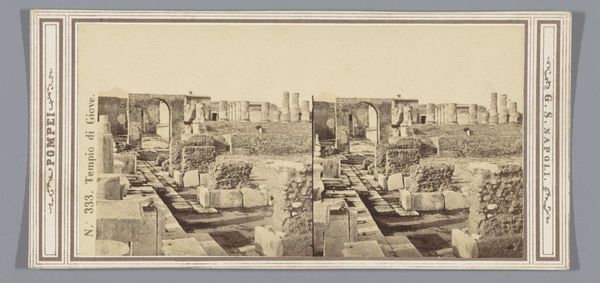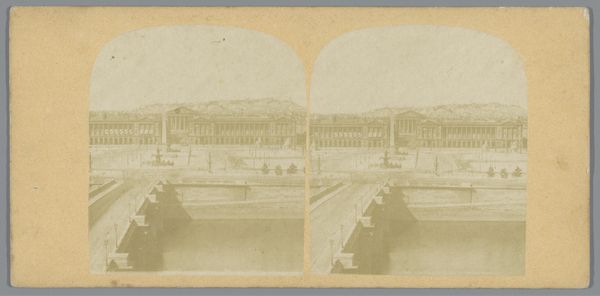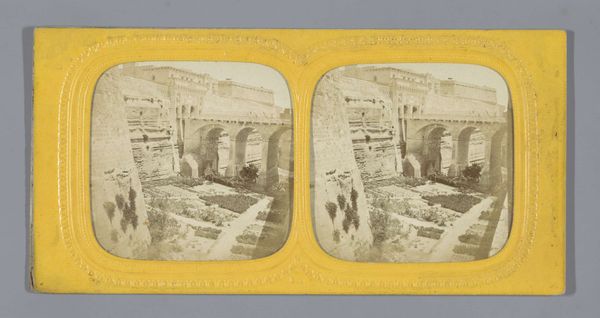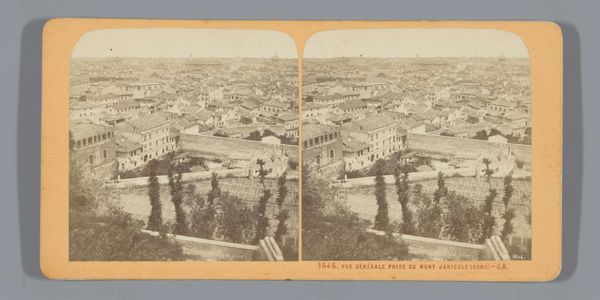
print, photography, gelatin-silver-print
# print
#
greek-and-roman-art
#
landscape
#
photography
#
ancient-mediterranean
#
gelatin-silver-print
#
cityscape
#
genre-painting
#
realism
Dimensions: height 88 mm, width 176 mm
Copyright: Rijks Museum: Open Domain
Editor: This is a stereograph from sometime between 1862 and 1876 by Jean Andrieu, called "Interior of the Colosseum in Rome." It's a photograph, a gelatin silver print. The sepia tones give it such an aged, almost haunting, quality. What strikes you most about this image? Curator: It’s compelling to consider the image through the lens of power and its decay. The Colosseum, a site of grand spectacle and brutal violence under the Roman Empire, is presented here as a ruin. What does it mean to capture this arena, once filled with the roar of the crowd and the suffering of gladiators and animals, now silent and empty? Editor: So, it's not just a picture of an old building? Curator: Absolutely not. Andrieu's photograph invites us to reflect on how civilizations rise and fall, how structures of power crumble over time. Think about who had access to this space, both during its active years and during the time this photo was taken. Who benefited, who suffered, and whose stories are told—or not told—within these walls? Editor: I never really thought about who it excluded. Curator: Exactly! This wasn't a democratic space, nor is its representation here neutral. Consider how the photograph might romanticize or sanitize a history built on exploitation and oppression. We should ask ourselves what purpose such images served for those who viewed them in the 19th century, especially within the context of European colonialism. Editor: It sounds like even a landscape can be a political statement. Curator: Indeed. Examining this photograph challenges us to think critically about the narratives we inherit and the ways in which images can perpetuate or disrupt dominant ideologies. Seeing the past through the lens of the present lets us question and reimagine its potential futures. Editor: I'll definitely look at photographs differently from now on. Thanks for your insight!
Comments
No comments
Be the first to comment and join the conversation on the ultimate creative platform.
